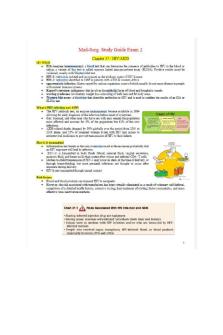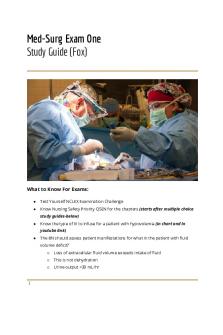Med Surg 2 Study Guide Answer Key PDF

| Title | Med Surg 2 Study Guide Answer Key |
|---|---|
| Course | Med surg |
| Institution | Jersey College Nursing School |
| Pages | 145 |
| File Size | 4.9 MB |
| File Type | |
| Total Downloads | 6 |
| Total Views | 142 |
Summary
Med surg info for your review thanks p...
Description
Answers CHAPTER 1 CRITICAL THINKING AND THE NURSING PROCESS AUDIO CASE STUDY Jane and the Nursing Process 1. Assessment/data collection, diagnosis, planning, implementation, and evaluation. 2. Jane was exhausted, failed a test, and was pulled in too many directions. 3. Jane’s resources included a good friend, sick time from work, and wasted time between classes that she could better utilize. Your resources will be different, but they’re there!
VOCABULARY Nursing Process Definition: An organizing framework that links thinking with nursing actions. Steps include assessment/data collection, nursing diagnosis, planning, implementation, and evaluation.
Subjective Data Definition: Information that is provided verbally by the patient and referred to as symptoms.
Nursing Diagnosis Definition: Per NANDA International, a nursing diagnosis is a “clinical judgment concerning a human response to health conditions/life processes, or a vulnerability for that response, by an individual, family, group or community. A nursing diagnosis provides the basis for selection of nursing interventions to achieve outcomes for which the nurse has accountability” (from www.nanda.org/glossary-of-terms).
Evaluation Definition: Examination of outcomes and interventions to determine progress toward desired outcomes and effectiveness of interventions.
Vigilance Definition: The act of being attentive, alert, and watchful.
Critical Thinking
SUBJECTIVE AND OBJECTIVE DATA
Definition: The use of those cognitive (knowledge) skills or strategies that increase the probability of a desirable outcome. Also involves reflection, problem-solving, and related thinking skills.
1. Subjective (symptom) 2. Subjective (symptom) 3. Objective (sign) 4. Objective (sign) 5. Subjective (symptom) 6. Objective (sign) 7. Subjective (symptom) 8. Objective (sign) 9. Subjective (symptom) 10. Subjective (symptom) 11. Objective (sign) 12. Objective (sign) 13. Subjective (symptom) 14. Objective (sign) 15. Objective (sign)
Assessment Definition: Gathering subjective and objective data to plan care.
Objective Data Definition: Factual information obtained through physical assessment and diagnostic tests. Objective data are observable or knowable through the health care worker’s five senses. Referred to as signs.
1
2
Chapter 1
Answers
CRITICAL THINKING This is just one possible way to complete a cognitive map. Could it be low blood sugar?
Am I diabetic?
Patient's perception
Frontal area
"Sick" feeling
Where is it?
Tylenol helps
Hard
Quality
Hunger makes it worse
Aggravating and alleviating factors Food helps
Headache
Useful other data
Sometimes feel sick to stomach
Mother is diabetic
Severity
7–8 on 0–10 scale
REVIEW QUESTIONS—CONTENT REVIEW The correct answers are in boldface. 1. (3) is a nursing diagnosis. (1, 2, 4) are medical diagnoses. 2. (1) is a medical diagnosis. (2, 3, 4) are nursing diagnoses. 3. (1) is correct. The nurse who keeps trying until the problem is solved is exhibiting perseverance. (2, 3, 4) are incorrect. 4. (3, 4, 5, 1, 2) is the correct order. 5. (1) is the best definition. (2, 3, 4) do not define critical thinking but are examples of good thinking.
REVIEW QUESTIONS—TEST PREPARATION The correct answers are in boldface. 6. (4) is correct. Evaluation determines whether goals are achieved and interventions effective. (2) is the role of the physician. (1, 3) encompass data collection and implementation, which are earlier steps in the nursing process. 7. (1) is correct. The licensed practical nurse/licensed vocational nurse can collect data, which includes taking vital
Timing
Lasts 1–2 hours once starts
Before meals
Early in the morning
signs; assessment is the first step in the nursing process. (2, 3, 4) are all steps in the nursing process, for which the registered nurse is responsible; the licensed practical nurse/licensed vocational nurse may assist the registered nurse with these. 8. (1, 4, 5) can be observed through use of the five senses. (2, 3) are subjective data that the patient must report. 9. (2) indicates that the patient is concerned about freedom from injury and harm. (1) relates to basic needs such as air, oxygen, and water. (3) relates to feeling loved. (4) is related to having positive self-esteem. 10. (4) is objective, realistic, and measurable with a time frame. (1, 2, 3) are all good outcomes, but they relate to airway clearance, nutrition, and strength, not directly to swallowing. 11. (2) is correct. The three parts of a diagnosis include the problem (from the NANDA International [NANDA-I] list), etiology (“related to”), and symptoms (“as evidenced by”). (1) does not include symptoms. (3) is a medical diagnosis. (4) is not a NANDA-I diagnosis, and the evidence is not related to dyspnea.
Answers CHAPTER 2 EVIDENCE-BASED PRACTICE AUDIO CASE STUDY Marie and Evidence-Based Practice 1. Thirdhand smoke is the dangerous toxins of smoke that linger on hair, clothing, furniture, and other surfaces in an area after a cigarette is put out. Marie learned that exposure to these toxins can be neurotoxic to children and can trigger asthma attacks in sensitive people. 2. Evidence-based practice is considered the gold standard of health care. 3. Step 1: Ask the burning question. Step 2: Search and collect the most relevant and best evidence available. Step 3: Think critically. Appraise the evidence for validity, relevance to the situation, and applicability. Step 4: Measure the outcomes before and after instituting the change. Step 5: Make it happen. Step 6: Evaluate the practice decision or change. 4. Combination therapy with a nicotine patch and nicotine lozenges worked best, although bupropion (Zyban) and nicotine lozenges worked well, too. A Cochrane Review found that advice and support from nursing staff can increase patients’ success in quitting smoking, especially in a hospital setting.
VOCABULARY 1. Evidence-based practice: A systematic process that uses current evidence in making decisions about patient care. 2. Evidence-informed practice: Consideration of patient factors along with the use of evidence for shared decisionmaking between the health care provider and the patient. 3. Randomized controlled trials: True experimental studies in which as many factors as possible that could falsely change the results are controlled. 4. Research: Scientific study, investigation, or experimentation to establish facts and analyze their significance. 5. Systematic review: A review of relevant research using guidelines.
6. Health literacy: Degree to which a person has the capacity to obtain, process, and understand basic health information and services to make the best-informed health decisions.
EVIDENCE-BASED PRACTICE 1. proof 2. context 3. quality 4. care 5. randomized 6. outcomes 7. gold 8. nursing 9. patient’s 10. information
CRITICAL THINKING 1. By questioning the existing way of doing things to ensure that the patient receives the best care possible. 2. A thorough search of the literature in the area of music therapy. 3. Cumulative Index to Nursing and Allied Health Literature (CINAHL) Database, Joanna Briggs Institute evidence-based resources, Cochrane Reviews, Medline/PubMed. 4. Measure patient outcomes before instituting the evidence-based change in practice so comparisons can be made after implementation to determine if the intervention worked. 5. Evaluate the results to determine whether the change made a significant difference and if it was worthwhile in terms of cost and time.
REVIEW QUESTIONS—CONTENT REVIEW The correct answers are in boldface. 1. (2) is Level I evidence. (1, 3, 4) are not examples of the best evidence. 2. (1) is a nursing database. (2, 3, 4) are primarily medical databases.
1
2
Chapter 2
Answers
3. (3) is the website for the Joint Commission, where you can find the National Patient Safety Goals. (1, 2, 4) are incorrect. 4. (2) is the definition of a randomized clinical trial. (1, 3, 4) are incorrect. 5. (1) is correct. Evidence-based practice begins with a burning question designed to solve a clinical problem. (2, 3, 4) are incorrect.
REVIEW QUESTIONS—TEST PREPARATION The correct answers are in boldface. 6. (2, 3, 4, 5, 6) are all independent nursing interventions because no health care provider’s order is required. (1) is a dependent function because it requires a health care provider’s order.
7. (1, 5) are Level I research. (2, 3, 4) are not systematic reviews of randomized controlled trials. 8. (1, 3, 5, 6) because the evidence-based practice process involves “ASKMME!”: ask, search, think, measure, make it happen, and evaluate. (2, 4) are not steps in the process. 9. (2, 3, 5) are correct, as they have been found to be best practice for oral care. (1, 4) do not remove plaque and only freshen the mouth. 10. (4) is correct. The search should be narrowed to include the focus on the question. (1, 2, 3) do not focus on the question being asked.
Answers CHAPTER 3 ISSUES IN NURSING PRACTICE AUDIO CASE STUDY Jim and the Health Care System 1. The use of information technology in nursing practice. 2. Ambulation, teaching leg exercises to prevent blood clots, and using sterile technique to prevent surgical site infections. 3. To avoid violating the Health Insurance and Portability and Accountability Act (HIPAA).
VOCABULARY 1. (3) 2. (1) 3. (4) 4. (2) 5. (8) 6. (5) 7. (6) 8. (7) 9. (10) 10. (9)
NURSING PRACTICE AND ETHICAL AND LEGAL PRINCIPLES 1. high, poor 2. state, protect, quality 3. Veracity 4. beneficence, fidelity, justice 5. knowledgeable, role, humor, respect
VALUES CLARIFICATION There are no correct answers to this section because this is an exercise requiring personal responses.
CRITICAL THINKING There are no correct answers to this section because this is an ethical exercise that has many choices to be considered for the best outcome for the patient.
REVIEW QUESTIONS—CONTENT REVIEW The correct answers are in boldface . 1. (3) is correct. (1, 2, 4) are incorrect. 2. (1) is correct. (2, 3, 4) are incorrect. 3. (4) is correct. (1, 2, 3) are incorrect. 4. (2) is the first step. (1, 3, 4) are incorrect. 5. (1) is correct. (2, 3, 4) are incorrect. 6. (3) is correct. (1, 2, 4) are incorrect. 7. (4) is correct. (1, 2, 3) are incorrect. 8. (1) is correct. (2, 3, 4) are incorrect.
REVIEW QUESTIONS—TEST PREPARATION The correct answers are in boldface . 9. (4) is correct. The patient is chronically ill but able to meet most goals and so has moderate wellness. (1) is incorrect. The patient is not near death. (2) is incorrect. The patient cannot meet all goals, so high-level wellness is not being achieved. (3) is incorrect. The patient is not in poor health because most goals are met through adaptation. 10. (2) is correct. The nurse–patient relationship is based on trust that the nurse will maintain all patients’ rights. (1) is a constitutional right, not an ethical issue. (3) is a legal issue. (4) is not an ethical principle. 11. (3) is correct. Paternalism occurs when a health care provider tries to prevent patients from making autonomous decisions or decides what is best for patients without regard for their preferences. (1) is incorrect. The nurse might be nonresponsive about the purpose of the medication due to lack of knowledge, but there are no indications that this is true. (2) is incorrect. Advocacy supports providing the medication information so that the patient is informed to make autonomous decisions. (4) is incorrect. Telling the patient not to worry is not therapeutic communication, as it does not address the patient’s concerns. 12. (1) is correct. Knowing the patient’s wishes helps the nurse advocate for and act in the best interest of the patient. (2, 3, 4) are incorrect. They are not the wishes of the patient. 13. (1, 2, 4, 5) are correct. These are all part of the five steps of delegation. See www.ncsbn.org/1625.htm.
1
2
Chapter 3
Answers
(3) is incorrect. In delegation, it is the right person not the right patient that is considered. (6) is incorrect. The right route relates to medication administration. 14. (2, 3, 4, 6) is correct. The patient is a likely victim of human trafficking; after completing data collection (ideally but unlikely in private), suspicions should be
reported to the health care team and then local law enforcement should be called. (1) is incorrect. Confrontation should not occur for the safety of all. (5) is incorrect. The patient should not be alerted to impending assistance, as this might alert the trafficker.
Answers CHAPTER 4 CULTURAL INFLUENCES ON NURSING CARE AUDIO CASE STUDY Dan and Cultural Assessment 1. Mrs. Basiouny did not want a male caregiver to bathe her or provide her personal care. She wanted her husband to be present during the health history. She did not like touch but did respond to eye contact. She preferred her own traditional foods. 2. Patients can appear noncompliant when in reality they are not receiving culturally appropriate care. 3. Assess and learn from each patient and avoid stereotyping.
VOCABULARY 1. (2) 2. (10) 3. (3) 4. (11) 5. (4) 6. (1) 7. (8) 8. (5) 9. (7) 10. (6) 11. (12) 12. (9)
CULTURAL CHARACTERISTICS 1. Primary characteristics of culture include nationality, race, skin color, gender, age, spirituality, and religious affiliation. 2. Secondary characteristics of culture include socioeconomic status, education, occupation, military status, political beliefs, length of time away from one’s country of origin, urban versus rural residence, marital status, parental status, physical characteristics, sexual orientation, and gender issues. 3. Traditional practitioners are health care providers from a patient’s native culture. They are typically native to another country, although they may practice in the United States.
4. Present-oriented people accept the day as it comes with little regard for the past and see the future as unpredictable. Past-oriented people may worship ancestors. Future-oriented people anticipate a better future and place a high value on change. Some individuals balance all three views; they respect the past, enjoy living in the present, and plan for the future.
CRITICAL THINKING: IMMIGRANTS AND PERSONAL INSIGHTS There are no correct or incorrect answers for these sections because these are exercises requiring personal responses.
CRITICAL THINKING: BATHING 1. In some cultures, it is improper for someone of the opposite sex to help with bathing. It is important to assess whether this is the case with this gentleman. 2. Find a male nurse’s aide, ask a family member to help, or skip the bath again. 3. Having a male aide do the bath is the best solution. If no male aide is available, the family may be approached for help, although this is not the best solution. Because this is the fourth day without a bath, skipping the bath is not the best option.
REVIEW QUESTIONS—CONTENT REVIEW The correct answers are in boldface. 1. (4) is correct. Tay-Sachs disease is an inherited disease most common among people of Eastern European Jewish (Ashkenazi) heritage. (1, 2, 3) are incorrect. 2. (3) is correct. Ethnocentrism is the tendency for human beings to think that their culture’s ways of thinking, acting, and believing are the only right, proper, and natural ways. (1, 2, 4) are incorrect. 3. (1) is correct. Hispanic Americans and American Indians generally have a higher glucose level than whites. They also have a higher than average risk of diabetes. (2) is incorrect.
REVIEW QUESTION—TEST PREPARATION The correct answers are in boldface. 4. (3) is correct. Initially you must assess what the family’s food practices are before an eating plan can be set up. (1) is incorrect. Giving a patient who has just moved to 1
2
Chapter 4
Answers
the United States an exchange list of foods does not ensure that the patient will change dietary practices. (2) is incorrect. Being able to calculate carbohydrates does not respect the family’s cultural preferences. (4) is incorrect. Although this is certainly an option for the future, the initial step is to obtain a dietary assessment. 5. (4) is correct. Patients can have religious counselors visit as long as the counselor does not do anything to interfere with treatment or cause a safety problem. (1) is incorrect. It is not necessary to get the supervisor’s permission. However, it is a good idea to let the supervisor know that a religious counselor is going to visit. (2) is incorrect. Religious counselors are allowed to visit. (3) is incorrect. The patient has the right to see a religious counselor. 6. (4) is correct. Extended family may be very important to members of some cultures, and it may help these patients to have them nearby. (1) is incorrect. Large numbers of family members in the cafeteria may cause further disruption in the cafeteria. (2) is incorrect. Large groups in the lobby may cause overcrowding for other families. (3) is incorrect. All family members should be allowed to visit. It may help to have them choose a spokesperson to control visiting for this patient. 7. (2) is correct. Reducing portion size decreases the overall calorie and fat consumption but will still allow the patient to cook and enjoy traditional foods in her culture. (1) is incorrect. Telling a patient to not purchase lard
does not mean she will comply. (3) is incorrect. Rarely does a person bake two separate pies. The goal is to reduce overall fat and calorie consumption. (4) is incorrect. It is inconsistent with the goal of reducing fat and calories. 8. (2) is correct. The patient must make her own decision, but she should be fully aware of the consequences. (1) is incorrect. Scare tactics are not appropriate; she may live whether or not she receives radiation therapy. (3) is incorrect. It borders on harassment by the staff. (4) is incorrect. Radiation therapy may be the best choice for this type of cancer. 9. (2) is correct. Changing the schedule slightly is preferable to omitting the medication. (1) is incorrect. Blood levels can be maintained on a different schedule, as long as the doses are reasonably spread out. (3) is incorrect. Omitting the medication will alter blood levels. (4) is incorrect. It does not respect the patient’s religious beliefs. 10. (3) is correct. This response seeks to discover the patient’s past spiritual practices. (1) is incorrect. Questionnaires are not appropriate when assessing patient’s spirituality. (2) is incorrect. Although it is important to be self-aware of one’s own spirituality and beliefs, it is not appropriate to share those beliefs with patients when they can cause distress, as in this case. (4) is incorrect. “Why” questions tend to feel critical and attribute blame.
Answers CHAPTER 5 COMPLEMENTARY AND ALTERNATIVE MODALITIES AUDIO CASE STUDY Susan and Complementary Therapy 1. Complementary modalities are added on to traditional therapies. Alternative modalities are used instead of traditional therapies. 2. Susan used biofeedback, progressive muscle relaxation, and imagery. 3. Patients should learn everything they can about a therapy before trying it. They should find information from reliable sources—not dot-com websites that are selling products. Before trying something new, they should check with their health care providers to make sure there are no interactions or contraindications.
VOCABULARY 1. (5) 2. (4) 3. (6) 4. (2) 5. (1) 6. (3)
COMPLEMENTARY MODALITY: GUIDED IMAGERY Purpose: To help the patient use mental images to reduce stress and p...
Similar Free PDFs

Med Surg 2 Study Guide Answer Key
- 145 Pages

Med Surg 2 Final Study Guide
- 25 Pages

Med Surg Study guide Notes
- 66 Pages
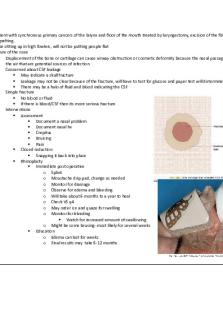
Med Surg II - Exam 2 Study Guide
- 57 Pages

Med Surg 2 Exam 3 Study Guide
- 22 Pages

Med-Surg Test #2 Study Guide
- 10 Pages
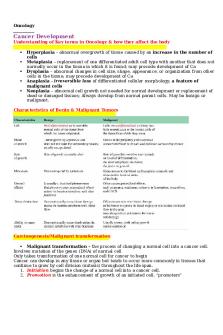
MED SURG 2 first study guide
- 20 Pages
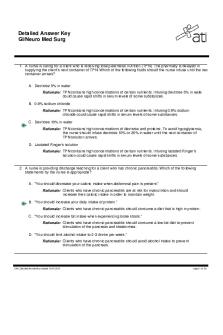
Ati gi med surg - Gi study guide
- 53 Pages

Med surg exam 1 study guide
- 25 Pages
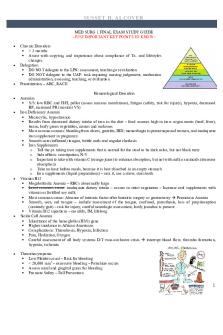
MED SURG 1 Final EXAM Study Guide
- 10 Pages

Med surg exam 3 study guide
- 68 Pages
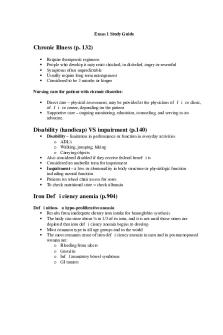
Exam 1 Study Guide - Med-Surg
- 26 Pages
Popular Institutions
- Tinajero National High School - Annex
- Politeknik Caltex Riau
- Yokohama City University
- SGT University
- University of Al-Qadisiyah
- Divine Word College of Vigan
- Techniek College Rotterdam
- Universidade de Santiago
- Universiti Teknologi MARA Cawangan Johor Kampus Pasir Gudang
- Poltekkes Kemenkes Yogyakarta
- Baguio City National High School
- Colegio san marcos
- preparatoria uno
- Centro de Bachillerato Tecnológico Industrial y de Servicios No. 107
- Dalian Maritime University
- Quang Trung Secondary School
- Colegio Tecnológico en Informática
- Corporación Regional de Educación Superior
- Grupo CEDVA
- Dar Al Uloom University
- Centro de Estudios Preuniversitarios de la Universidad Nacional de Ingeniería
- 上智大学
- Aakash International School, Nuna Majara
- San Felipe Neri Catholic School
- Kang Chiao International School - New Taipei City
- Misamis Occidental National High School
- Institución Educativa Escuela Normal Juan Ladrilleros
- Kolehiyo ng Pantukan
- Batanes State College
- Instituto Continental
- Sekolah Menengah Kejuruan Kesehatan Kaltara (Tarakan)
- Colegio de La Inmaculada Concepcion - Cebu


